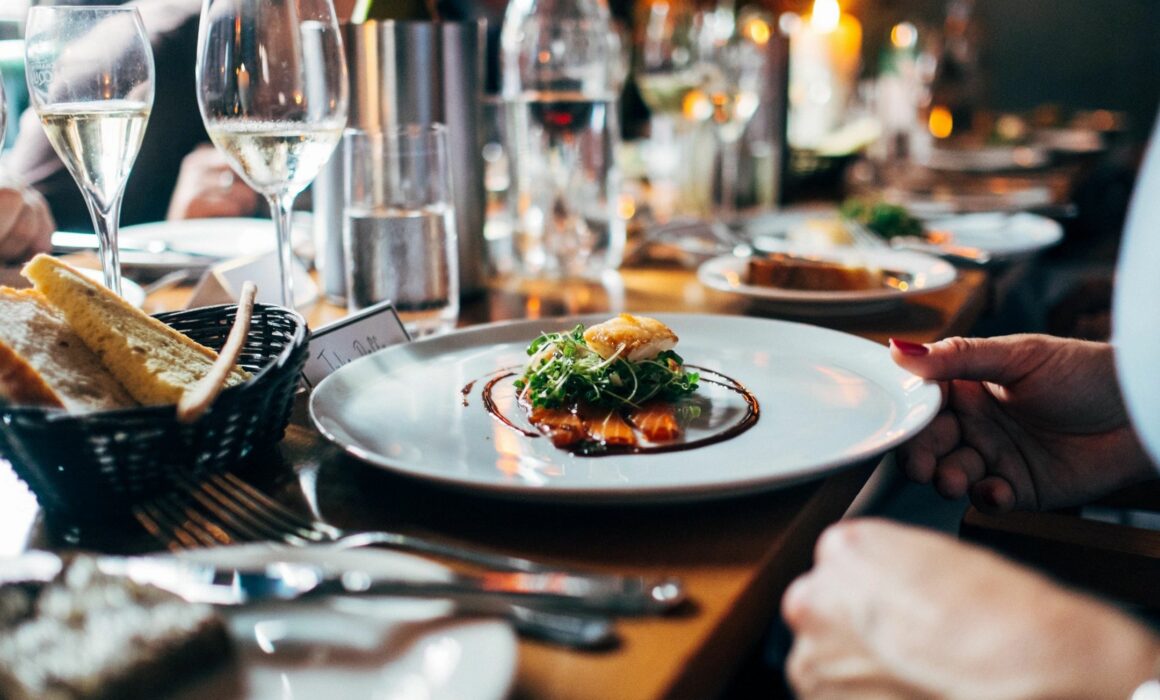All About Food & Wine Pairing
The best way to learn about food and wine pairings is to understand the basics so you feel empowered to do it all on your own. I always like to say the best wine to pair with your favorite meal is the wine you like the best! There are lots of different pairings for every dish and every wine, however, there are some basic principles that will help guide you. The fun part of learning about wine is developing your senses so you can decide what tastes best to you.
There are five fundamental components to all wines. It’s helpful to think of wine pairings in relationship to these components and how they interact with the nuances of the food on your plate. The goal of a great wine pairing is to balance the qualities of both the wine and the food, in a way that highlights each partner’s greatness.
The five basic wine characteristics are:
- Sweetness: Any residual sugar remaining from the fermentation process will make a wine taste sweeter.
- Acidity: Acidity in wine comes from tartaric, malic, and citric acid from the grapes. Acidity is responsible for the perceived tartness or crispness in wine. As grapes ripen, they become less acidic (and more “sugary”). Therefore, wines from cooler climates are typically more acidic because the grapes tend to ripen more slowly in the cooler temperatures, leaving more acid and less sugar in the grapes at harvest.
- Tannin: Tannin is a polyphenol found in grape skins and seeds. Tannins create a mouth-drying feeling on the tongue or gums, which helps with palate cleaning.
- Alcohol: Alcohol is made from yeast converting grape sugar into ethanol. Alcohol adds body to wines, with bigger bodied wines typically having higher alcohol contents.
- Body: The difference between a light and full-bodied wine is similar to the difference between skim and full milk. Lighter wines tend to be more acidic, lower alcohol, less tannic, and less sweet whereas bolder wines tend to be less acidic, higher alcohol, more tannic, and sometimes sweeter.
So, how do these wine characteristics and qualities interplay with food?
- Acidic Food: match with high-acid wines. Lower acidity wines will taste flat.
-
- Food examples: citrus or balsamic vinaigrette, tomato-based sauces
- Rich Food: match with high tannin reds or high acid whites for their palate cleansing effects with fat.
-
- Food examples: creamy sauces, macaroni and cheese
- Spicy Food: match with low alcohol or sweet wines to reduce the burning sensation in your mouth.
-
- Food examples: salsa, spicy curries, hot sauce, horseradish-based sauces
- Bitter Food: match with low to no-tannin or sweeter wines. Tannic wines will increase the bitterness.
-
- Food examples: kale, grapefruit, arugula, dark chocolate
- Sweet Food: match with sweet wines. The wine should always be sweeter than the food! Sweet food will often make a regular dry wine taste more bitter.
-
- Food examples: cakes, cookies, fudge, milk chocolate, ice cream
- Salty Food: match with acidic or fruity wines.
-
- Food examples: popcorn, pretzel, mixed nuts, tortilla chips
When pairing, go for balance between your food and wine pairings. Pair lighter wines with lighter dishes and bolder wines with heavier dishes. Match weight with weight, intensity with intensity, and aromatics with aromatics.
There are two main theories behind pairings: congruent and complementary. In congruent wine pairings, there is a strong overlap of flavor compounds between the food and wine, which intensifies the overlapping qualities. In complementary pairings, there are only a few shared flavor compounds between the food and wine, which means you’re going for contrast and balance (Source).
Congruent Wine Pairing: A creamy sauce with pasta paired with an oaked Chardonnay from Sonoma County. The buttery flavors from the oak aging create a soft wine that supports the creaminess in the dish. If an unoaked Chardonnay that was very crisp and acidic was chosen instead, this would create a complementary wine pairing.
Complementary Wine Pairing: Pairing the same creamy pasta dish above with an unoaked Chardonnay or a bright Sauvignon Blanc. The bright crispness and acidity in either of these wine pairings would contrast with the fat from the creamy sauce, giving the tongue two very different flavor profiles and mouthfeels.
Both of these types of food and wine pairings work, so you can try both out and see which pairing best suits your tastes and palate!
Lastly, here are some of my go-to food and wine pairing tips to keep in mind:
- Rosé is delightful with almost any food pairing. If you’re stressing out and don’t know what to do, get a dry rosé.
- Pinot Noir is an earthy, light red wine that pairs great with just about anything, especially earthy foods. Whether you’re eating a burger, salmon or mushroom pasta, you can confidently reach for a glass of Pinot Noir.
- Sparkling wines aren’t just for special occasions. They’re exceptional palate cleaners which means they pair well with fatty dishes where you need to wake up your tongue.
- When dealing with extremely vegetal culprits (asparagus, artichokes, avocado), lean into the vegetal, crisp profile of white wines like Sauvignon Blanc to complement and highlight the greenness of the dish.
- If you have a heavily spiced or peppery dish, go light and sweet so you don’t increase the mouth burn. Try a crisp, sweet Riesling or Gewürztraminer.
- Wines should be more acidic and sweeter than the food. Otherwise, you risk the wine tasting flabby or bitter.


